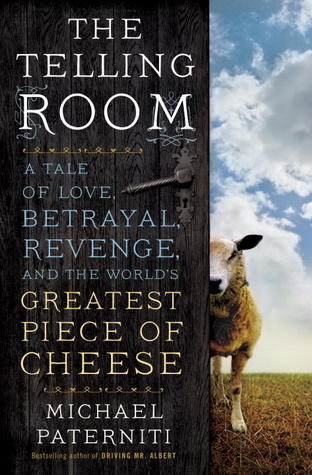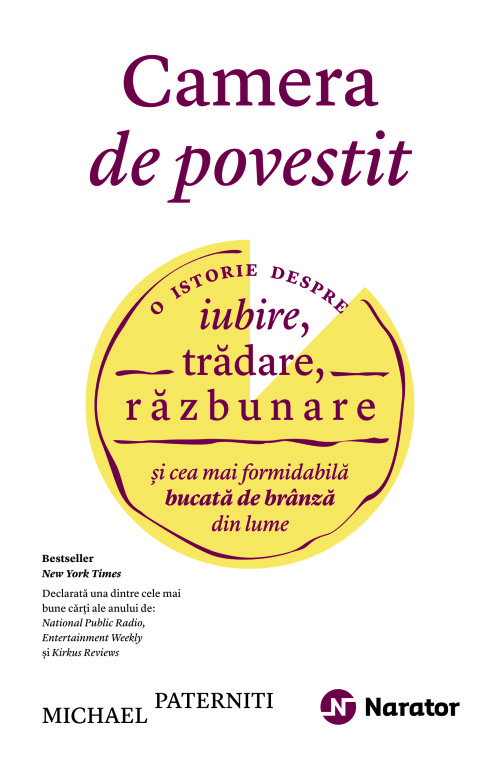
This book could make you fat. It is a tale about cheese and will make you hungry for cheese. But, it is also about pleasure and the past. In the figure of Ambrosio Molinos de Las Heras, the wine-savoring master Castilian cheese maker at the heart of it, Michael Paterniti has found a man whose life story is a lesson in the dangers of combining these two things.
It all begins in Ann Arbor, Mich., in the early 1990s when Paterniti was a creative writing student at the university. Late in his studies it occurred to him he wasn’t learning very marketable skills. Weeks before graduation, he slings an application into Zingerman’s, the famous gourmet deli. He is turned down flat, but gets a shot at editing its newsletter.
Ari Weinzweig, the deli’s owner, was a world-traveling gourmand in the days before such figures had their own cooking shows. And it was in London that Ari stumbled onto a very special cheese, aged in caves and made for generations from a family recipe in a village a hundred-odd miles east of Madrid. Paterniti, the newsletter editor, didn’t have to change a word of the tale. Paterniti, the future collector of tales, never forgot it.
“The Telling Room” spins the hilarious yarn of how Paterniti, aged and ripened by experience, with two kids, a wife, and all the attendant anxieties about finitude, found himself finally ready to tell this cheese’s tale. Rich and shaggy, full of Castilian-size detours, it is a travelogue, food adventure, and personal memoir rolled into one hugely likable book.
It is also a classic example of how the tale of getting the tale can, in the right hands, be storytelling gold. First, Paterniti had to find the cheese. There were a couple barriers. He didn’t speak Spanish. He only knew vaguely where it came from. He also, as it happens, didn’t know a thing about cheese, having been raised in the suburbs on Kraft singles and Cheetos.
A Spanish-speaking friend named Carlos is recruited, dialing long-distance, tracking down an elusive figure who promises that if they show up in the village of Guzman on the third Sunday of August, he will be there to greet them.
From the moment Ambrosio walks on stage, “The Telling Room” is his. Sad-eyed, heavy-bellied, stoked by gallons of his family’s wine and chorizo and the pleasure of sharing both, he is a chimney for gustatory enthusiasm.
He does things the old way. Soaring on gusts of drink and talk, he riffs about going to the bathroom in the wilderness, talking to sheep because they are friends, and enjoying wine because it is alive.
Tales of woe and revenge, love and patience, pour out. There are men who drowned in fermentation vats. A father who nearly died of a livestock-imparted disease. Ambrosio prayed and offered his life for that of his father’s. When the old man survived, Ambrosio began searching for a purpose and found it in resurrecting the family’s tangy, powerful, aged cheese.
As a journalist, Paterniti has always been drawn to the miraculous. A man who drives across the country, ferrying Einstein’s brain to a lab. The tallest man in the world, living in a premodern village in Eastern Europe. The hillbilly from Arkansas who became president of the world’s most powerful nation.
In “Telling Room,” Paterniti proves that the hardest quarry as a journalist is not the extraordinary, but the everyday. How do you make a story out of a family’s pride? Is it possible to capture the warmth of a friend on the page? Or in a piece of cheese?
Paterniti finds lessons boomeranging off Ambrosio’s life. Some of the most important things in life are best done with friends, and wine, and slowly. It sounds simplistic, and indeed rather familiar in our times of farm-to-table restaurants, yoga, and Zen retreats, to remark on the need to slow down. Somehow, and this is where the miraculous comes in, Paterniti manages to make this idea sound fresh again.
A lot of this owes to his portrayal of Ambrosio, who after years of false starts and mistakes, recovers his family’s recipe, watches as his cheese grows world famous, and then loses control over his business to his conniving best friend.
The Romanian edition of the book
What really matters when you lose everything? Usually, we’re left with a story, and hopefully, someone to tell it to. What made his cheese so good, Ambrosio says, was not the olive oil it steeped in, or which side of the hill the sheep grazed on. It was that it told a story that made sense of the past.
In “The Telling Room,” Paterniti gets to the bottom of this instinct to narrate, especially through loss. A story can let us believe, for a moment, that we’re not just here right now. Something larger flows through us, even if it is the minerality of a good water, the tannins of a wine grown in a region nearby.
But can a story redeem? Detouring back and forth across Castilian history, plate tectonics, and the tangled web of Ambrosio’s family line, Paterniti shows how, at least in Ambrosio’s part of the world, tales have done something better: They’ve turned pain into pleasure. He also implicitly asks a question that gives readers a pass to give in to the gustatory instincts Ambrosio will likely spark. If it tastes so good, why shouldn’t we believe such tales?
John Freeman is the author of “How to Read a Novelist,” and editor of the literary biannual “Freeman’s.”
He review “The Telling Room. A Tale of Love, Betrayal, Revenge, and the World’s Greatest Piece of Cheese” by Michael Paterniti, the Englosh version, pubblished at New York: The Dial Press.
The Romanian version of the review can be read here.
Both Michael Paterniti and John Freeman are guests at The Power of Storytelling, the conference held in Bucharest, Romania, October 9th and 10th.




